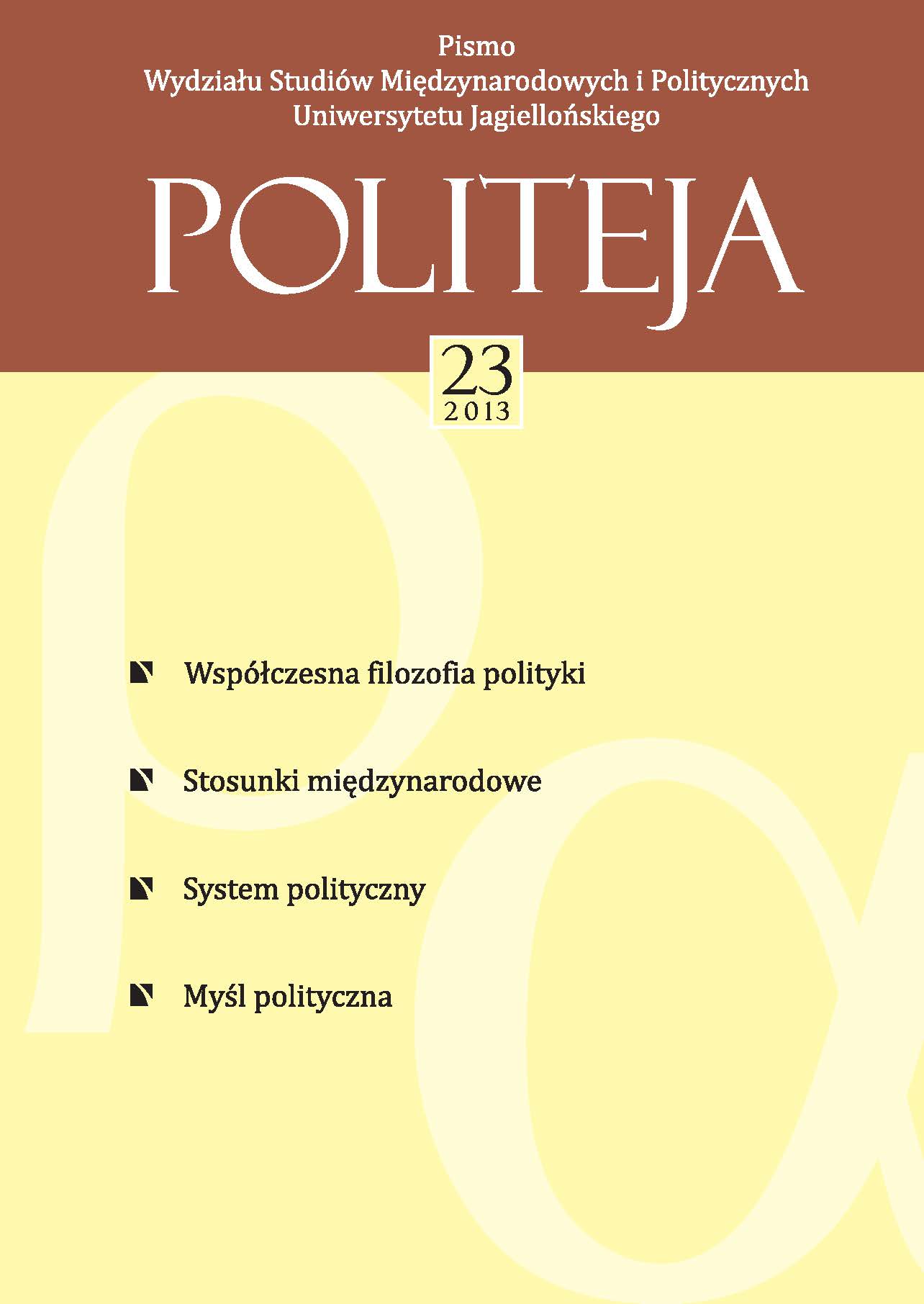Separate, Equal, or Separate-But-Equal? The Changing Image of Race in the U.S. Supreme Court’s Decisions
DOI:
https://doi.org/10.12797/Politeja.10.2013.23.12Keywords:
U.S. Supreme Court, judicial review, racial segregation, equal protection of law, constitutionalismAbstract
There is no doubt that the United States were not created as a purely democratic state. On the one hand, it established basic rules and principles of democratic government such as free elections, sovereignty of the nation, fundamental rights and freedoms of individuals or independent judiciary. All of these principles were, however, enjoyed only by the part of American society: free elections were guaranteed for white men, excluding women and blacks; sovereignty belonged to the nation, i.e. white women and men, because slaves were not considered citizens; fundamental rights and freedoms were guaranteed only for whites; institutional independence of the judicial branch did not prevent the system from injustice towards the blacks. Furthermore, one of the most important values of democratic society, equal protection of law, was absent in the original constitutional document of 1787, as well as the provisions of Bill of Rights. The clause became part of U.S. constitutional reality yet in 1868 when the Fourteenth Amendment was enacted, as a direct result of social and political changes caused by the civil war. After introducing the Thirteenth Amendment in 1865, which abolished slavery, the government took a step forward by making all citizens equal in 1868 and by providing black Americans with suffrage rights in 1870. For former slaves it meant a milestone step in their fight to destroy the social and political boundaries which limited their basic rights and freedoms. However, before the above mentioned events took place, the period of injustice and exploitation occurred with the U.S. Supreme Court in the middle of social and political tensions. The main purpose of the article is to show the changing attitude of the U.S. Supreme Court with regard to the social and political status of African‑Americans. This attitude influenced historical and contemporary social relations among the American society proving one of the most controversial aspects of U.S. democracy.
Downloads
References
Amar A.R., America’s Constitution. A Biography, New York 2005.
Belknap M.R., The Supreme Court under Earl Warren, 1953‑1969, Columbia 2005.
Bohm R., Deathquest. An Introduction to the Theory and Practice of Capital Punishment in the United States, Cincinnati 1999.
Burger W.E., It Is So Ordered. A Constitution Unfolds, New York 1995, p. 131.
Dudziak M.L., Cold War Civil Rights. Race and the Image of American Democracy, Princeton 2000.
Eisgruber C.L., ‘The Story of Dred Scott. Originalism’s Forgotten Past’ in M.C. Dorf (ed.), Constitutional Law Stories, New York 2004.
Fehrenbacher D.E., The Dred Scott Case: Its Significance in American Law and Politics, New York 1978. DOI: https://doi.org/10.2307/1340509
Finkelman P., ‘The Taney Court (1836‑1864). The Jurisprudence of Slavery and the Crisis of the Union’ in C. Tomlins (ed.), The United States Supreme Court. The Pursuit of Justice, Boston 2005.
Harris C.I., ‘The Story of Plessy v. Ferguson. The Death and Resurrection of Racial Formalism’ in M.C. Dorf (ed.), Constitutional Law Stories, New York 2004.
Iaccarino A., ‘The Founding Fathers and Slavery’ in: The Founding Fathers. The Essential Guide to the Men Who Made America, Hoboken 2007.
Irons P., A People’s History of the Supreme Court, New York 2000.
Jackson V.C., Constitutional Engagement in Transnational Era, New York 2010.
Jenkins P., A History of the United States, New York 2007.
Kautz S. et al. (eds.), The Supreme Court and the Idea of Constitutionalism, Philadelphia 2009. DOI: https://doi.org/10.9783/9780812206074
Laidler P., Basic Cases in U.S. Constitutional Law, vol. 1: Separation of Powers, Cracow 2005.
Laidler P., Basic Cases in U.S. Constitutional Law, vol. 2: Rights and Liberties, Cracow 2009.
Monk L.R., The Words We Live By. Your Annotated Guide to the Constitution, New York 2000.
Nowak J.E., Rotunda R.D., Constitutional Law, St. Paul 2000.
Obama B., The Audacity of Hope. Thoughts on Reclaiming the American Dream, New York 2006.
Pach C.J., Richardson E., The Presidency of Dwight D. Eisenhower, Lawrence 1991.
Segal J.A., Spaeth H.J., Benesh S.C., The Supreme Court in the American Legal System, New York 2005. DOI: https://doi.org/10.1017/CBO9780511614705
Starr K.W., First Among Equals. The Supreme Court in American Life, New York 2002.
Storing H.J., ‘Slavery and the Moral Foundations of the American Republic’ in R.H. Horwitz (ed.), The Moral Foundations of the American Republic, Charlottesville 1986.
Swisher C.B., The Taney Period, 1836‑1864, New York 1974.
Tushnet M., Taking Constitutional Away From the Courts, Princeton 2000. DOI: https://doi.org/10.1515/9781400822973
Whittington K.E., Political Foundations of Judicial Supremacy. The Presidency, the Supreme Court, and Constitutional Leadership in U.S. History, Princeton 2007. DOI: https://doi.org/10.1515/9781400827756
Downloads
Published
Issue
Section
License

This work is licensed under a Creative Commons Attribution-NonCommercial-NoDerivatives 4.0 International License.






